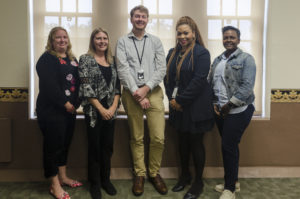Until recently, research has suggested early psychosis has its roots in poor glycine production (Elsevier, 2017). This hypothesis was due, in part, to evidence that psychosis was caused by impaired NMDA receptors, glutamate-gated channels responsible for numerous biological functions as well as leaning, memory, and neuroplasticity (Blake and VanDongen, 2009; Elsevier, 2017). It was believed that supplying patients with additional glycine would alleviate symptoms of early psychosis; however, drugs targeting NMDA receptors have demonstrated limited success in the past (Blanke and VanDongen, 2009; Elsevier, 2017).
New research from Kim et al. (2017) suggests that first-episode psychosis is not linked to a deficit of glycine but a surplus. While this finding does not discredit the NMDA receptor hypofunction hypothesis, it does create new questions. Future research will need to examine if accumulation of glycine is due to reduced glycine use or overproduction of the amino acid (Kim et al., 2017). Regardless, the new finding helps spread light on why glycine treatment has demonstrated limited effectiveness in the past, and may warrant new avenues of treatment for first-episode psychotic symptoms.
References:
Blanke, M.L. & VanDongen, A.M. (2009). Activation mechanisms of the NMDA receptor. In A.M. VanDongen (Ed.), Biology of the NMDA Receptor. Boca Raton, FL: CRC Press/Taylor & Francis.
Elsevier. (2017). Brain chemical abnormalities in earliest stage of psychosis identified. ScienceDaily. Retrieved October 12, 2017 from www.sciencedaily.com/releases/2017/10/171011120339.htm
Kim, S., Kaufman, M., Cohen, B.M., Jensen, J.E., Coyle, J.T., Du, F., & Öngür, D. (2017). In vivo brain glycine and glutamate concentrations in patients with first-episode psychosis measured by echo-time-averaged proton magnetic resonance spectroscopy at 4T. Biological Psychiatry. doi: http://dx.doi.org/10.1016/j.biopsych.2017.08.022
Michael Daniel, MA
WKPIC Doctoral Intern



